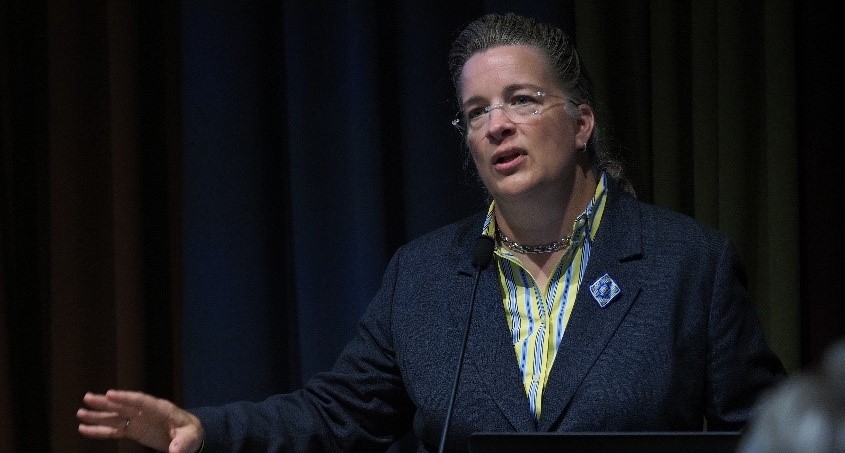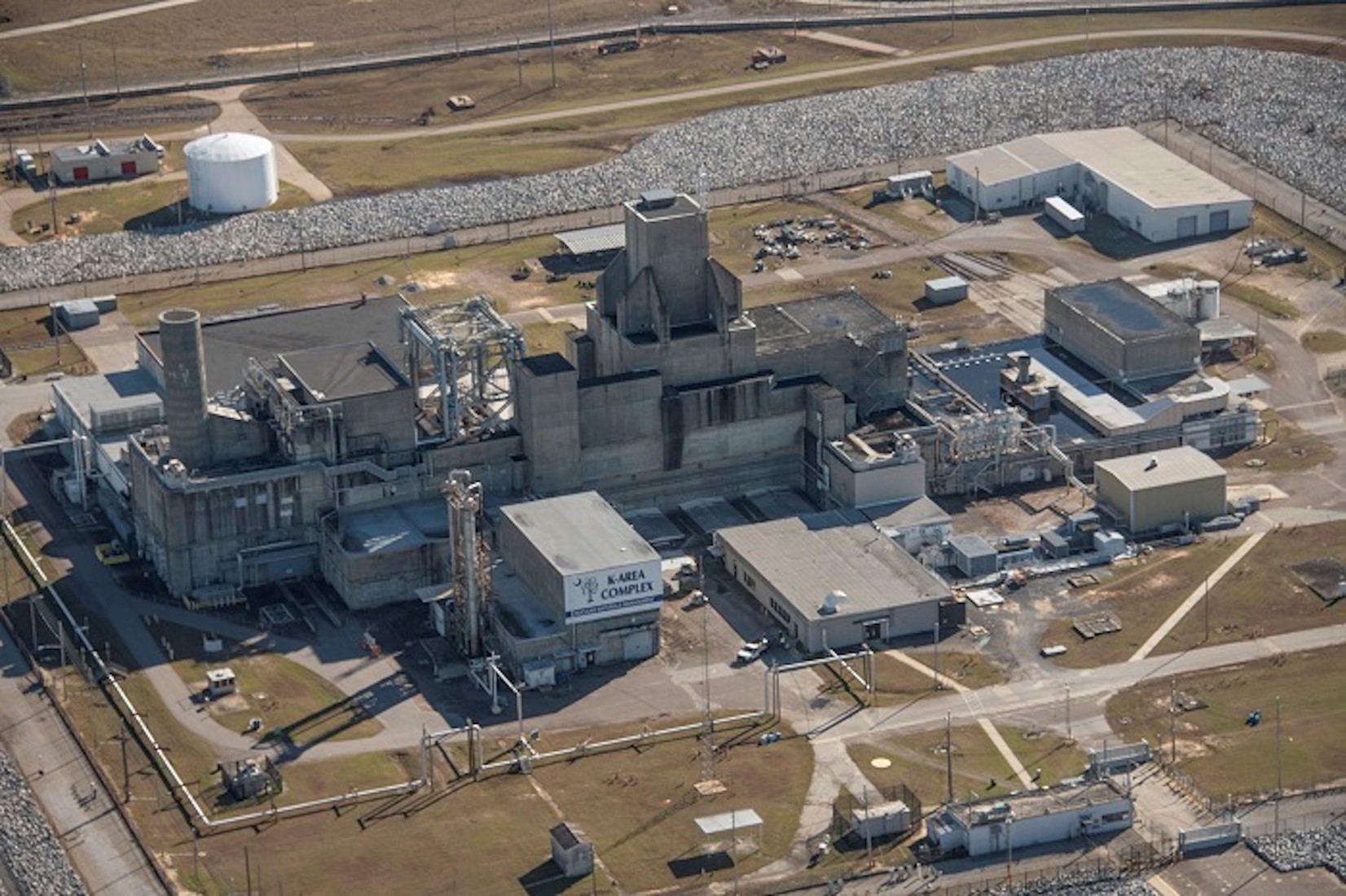Tuber magnatum, or European white truffles, may be the most expensive food on earth per kilogram. (Photo: Evan Sung)
Scientists from the Jozef Stefan Institute in Slovenia, with technical advice and analytical support from the International Atomic Energy Agency and the Food and Agriculture Organization of the United Nations, are studying the composition of truffles—a rare and expensive type of mushroom—in order to determine their origin and help detect fraud. Thanks to a database and the techniques developed, other laboratories worldwide can also test truffles, establish their geographical origin, and verify whether they are genuine.
The hemicycle of the European Parliament in Strasbourg. Photo by DAVID ILIFF.
Eighty-seven members of the European Parliament sent a letter to the European Commission last week to lobby for the addition of nuclear energy to the EU taxonomy, the purpose of which is to direct investments toward environmentally sustainable economic projects to meet the European Union’s climate change mitigation and energy-mix targets.
A look at Fukushima Daiichi today. (Photo: The Asahi Shimbun via Getty Images)
News programmers’ hunger for stories about the aftermath of the earthquake and subsequent tsunami that caused three reactor meltdowns at Fukushima Daiichi in March 2011 shows no signs of abating.
The Plutonium Facility at Los Alamos National Laboratory. (Photo: LANL)
The Defense Nuclear Facility Safety Board, which provides independent federal oversight of Department of Energy weapons facilities, has reported that low-level radioactive and other combustible waste is accumulating in the basement of Los Alamos National Laboratory’s Plutonium Facility (PF-4), and that housekeeping and waste management in the PF-4 basement have been a continuing challenge.
The 1958 Ford Nucleon concept car. (Photo: The Drive )
A car capable of traveling 5,000 miles between fueling stops? Sounds impossible, right? It turns out that, yes, it was impossible. But that didn’t stop the Ford Motor Company in 1958 from envisioning a car—the Nucleon—powered by a small nuclear reactor. The Drive took a close look at the fantastical idea in a July 5 article, “Inside the Impossible Dream of the Nuclear-Powered 1958 Ford Nucleon.”
Training for the realities of radiological incidents and emergencies
July 9, 2021, 2:43PMNuclear NewsGreg White, Steve Kreek, William Dunlop, Joshua Oakgrove, Dan Bower, Dave Trombino, Erik Swanberg, and Steven Pike One of the biggest challenges in training for incidents and emergencies that involve high-radiation-dose hazards is balancing between realism and safety. To be truly prepared for the realities of real-world nuclear and radiological emergencies, responder personnel need experience against those hazards but without introducing additional and very personal risks associated with unnecessary radiation exposure. The difficulty is in figuring out how we can achieve a level of realism that encompasses the entire process, from the initial detection of a hazard or threat, through its characterization, to recommending actions and leadership decision-making.
Flags in front of the European Commission building in Brussels. (Image: Sébastien Bertrand)
The European Commission last week adopted the Euratom Work Programme 2021–2022, implementing the Euratom Research and Training Programme 2021–2025, a complement to Horizon Europe, the European Union’s key funding program for research and innovation.
Former commissioner Annie Caputo left the NRC when her term expired at the end of June.
In a July 1 letter to President Biden, ANS President Steven Nesbit and ANS Executive Director/CEO Craig Piercy stated that a full complement of five commissioners is essential to the effectiveness of the Nuclear Regulatory Commission in protecting public health and safety while enabling the deployment and applications of nuclear technology.
Map of ERCOT over the state of Texas (Image: ERCOT)
Motivated by February’s Texas grid debacle and last month’s Electric Reliability Council of Texas (ERCOT) alert pleading with residents to conserve energy, Gov. Greg Abbott earlier this week issued a letter to members of the Public Utility Commission of Texas (PUC), directing them to take immediate action to improve electric reliability across the state. According to the governor’s office, the directives build on reforms passed in the 87th legislative session to increase power generation capacity and ensure the reliability of the Texas power grid.
An artist's rendering of the HI-STORE facility (Image: Holtec)
The Nuclear Regulatory Commission plans to complete its safety review of Holtec International’s proposed HI-STORE consolidated interim storage facility by January 2022. A final licensing decision on the facility will be made in conjunction with the release of the agency’s final safety evaluation report, the NRC said in a July 2 letter to Holtec.
A view of Savannah River’s K Area Complex, where plutonium downblending operations take place. (Photo: DOE)
The Department of Energy’s Office of Environmental Management has doubled the number of work shifts for employees in glove box operations at its Savannah River Site in South Carolina. The increased work pace will help the department meet its commitment to South Carolina to remove surplus plutonium from the state, the DOE said.
The headquarters of the European Commission in Brussels, Belgium.
Two reports submitted last week to the European Commission to help it decide whether to include nuclear energy in the “EU taxonomy”—a classification system establishing a list of environmentally sustainable economic activities for the European Union—could end up prolonging the decision-making process, as the reports are not in full agreement on the matter.
NWMO geologists study rock formations in the Ignace area of Ontario, Canada.
Canada’s Nuclear Waste Management Organization is studying the geology of the Ignace, Ontario, area to confirm its suitability as a site for a deep geologic repository for spent nuclear fuel and high-level radioactive waste. Ignace is one of two areas the NWMO is investigating as possible host sites for a repository, with South Bruce, Ontario, being the second area.










.jpg)
.jpg)







